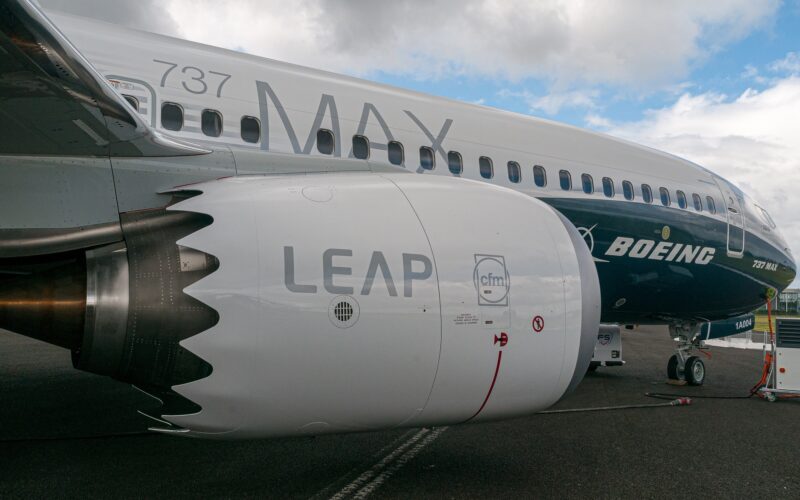With the effective date of the Aircraft Certification, Safety, and Accountability Act (ACSAA) fast approaching, Boeing is still keen for United States (US) lawmakers to grant an extension or push the deadline for the manufacturer to certify the 737 MAX-7 and MAX-10 aircraft.
“We’re still working obviously and hope something happens this year – got another shot early next [year – ed. note],” said Stan Deal, the President and CEO of Boeing Commercial Airplanes (BCA). Deal, who spoke to Reuters at an event where both the planemaker and United Airlines announced a record-breaking order for 100 Boeing 787 and 100 Boeing 737 MAX aircraft, was hopeful that “Congress does their part of this”.
Planning certification for the 737 MAX-7 and MAX-10
While Boeing was still optimistic that it could at least certify the 737 MAX-7 before the deadline, without sharing the same optimism regarding the 737 MAX-10, hopes were continuously dashed by the US lawmakers and authorities.
In November 2022, when Boeing presented its results during the Investor Conference, Deal mentioned that 737 MAX-10 certification could happen in late 2023 or early 2024. But the Federal Aviation Administration (FAA) had begun shutting down the manufacturer’s hopes that the 737 MAX-7 would fly commercially in 2022 in mid-November 2022 when the authority’s Acting Administrator Billy Nolen indicated that it “does not appear” that the smallest 737 MAX jet would receive its certification by the end of the year.
Meanwhile, speaking at the same event, United Airlines CEO Scott Kirby said he expected that the question of 737 MAX certification will move to the next year, adding that the aircraft should have common alerting systems throughout the four variants. The Boeing 737 MAX-8 and MAX-9, which have been certified by the FAA prior to the groundings in March 2019, were not required to have these systems onboard.
The event, which took place in Charleston, South Carolina, marked another recovery step for the 737 MAX program, as more and more airlines are returning to order the aircraft. Since it became ungrounded in November 2020, Boeing added a total of 1,409 orders for the 737 MAX, excluding United Airlines’ latest deal, according to the manufacturer’s Orders & Deliveries data as of November 31, 2022. In 2019, the planemaker only managed to accumulate 47 orders for the narrow-body jet, which otherwise has been a sales blockbuster. While the reasoning was understandable, ordering an aircraft that is still grounded and under investigation would have been a public relations disaster, Boeing still needed cash to run its operations.
Still, a full recovery of the 737 MAX program is not on the horizon just yet, as the manufacturer would potentially have to solve the puzzle of how to certify the 737 MAX-7 and MAX-10.
“We want that date to go away”
As the ACSAA, which was passed into US legislation following two fatal Boeing 737 MAX crashes in October 2018 and in March 2019, will come into effect on December 27, 2022, the plane maker’s two aircraft types will be stuck in limbo.
While Deal has raised the question of whether the FAA can continue working on certifying the aircraft after the deadline without checking the cockpit alerting systems with the FAA itself, the President and CEO of BCA still had no answer. The FAA, meanwhile, stated that it “will cease work on reviews related to the crew alerting system for the 737 MAX-7 and -10 in accordance with our congressional mandate,” according to the same Reuters report.
On the same day that United Airlines and Boeing announced the order, David Calhoun, the President and CEO of Boeing, spoke with CNBC, mentioning that “deadlines are not good for certification”.
“They are not good for the regulator to get its job done, they are not good for us in trying to certify that airplane,” Calhoun continued, adding that “we want that date to go away.” The CEO’s reasoning was that the date should not put pressure on the FAA to certify either of the 737 MAX variants, as everyone must make “safe choices every step of the way”.
“The 7 and the 10 are safe choices, this is the right alerting system in this airplane,” Calhoun concluded.
Calhoun and Maria Cantwell, a Democrat from Washington State, appear to share the sentiment. Cantwell put forward a bill that would eliminate the deadline. However, where their point of view differs is that the Senator wants to mandate changes to the systems onboard the 737 MAX. While Boeing has allowed airlines to order aircraft with the new systems, this being presented as an option does not seem to be enough for Cantwell or the European Union Aviation Safety Agency (EASA), for that matter. When the European regulator ungrounded the 737 MAX in January 2021, it did so only by agreeing with Boeing that post-return to service (RTS), the manufacturer would make changes that would be certified together with the 737 MAX-10.
“In order to ensure the long-term safety of the 737 MAX, EASA has also agreed with Boeing two key post-RTS actions: (i) the development of a modification to further improve the AOA integrity, to be integrated in 737-10 version and retrofitted on the in-service fleet, and (ii) the further evaluation of the CAS,” EASA’s 737 MAX RTS report read.
Transport Canada (TC), Canada’s aviation safety regulator, in a statement to AeroTime on December 12, 2022, mentioned that it has received the documentation for the two models. “The validation work will be subsequent to the Federal Aviation Administration’s certification, which is still ongoing,” the statement continued. The spokesperson added that “validation depend on the satisfactory completion of Transport Canada’s technical review and the responsiveness of the manufacturer.”

